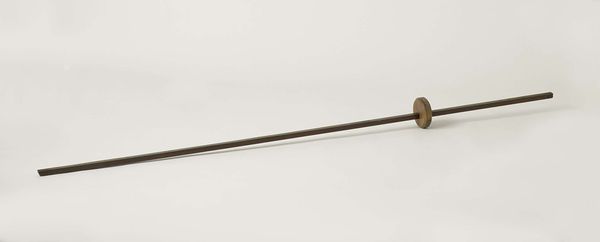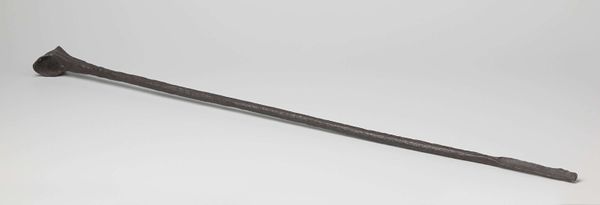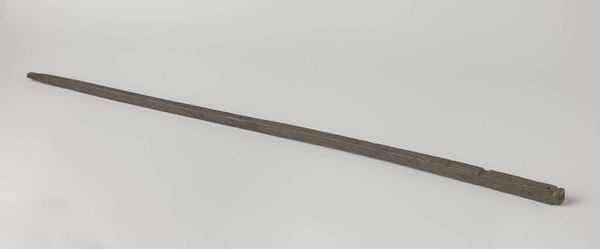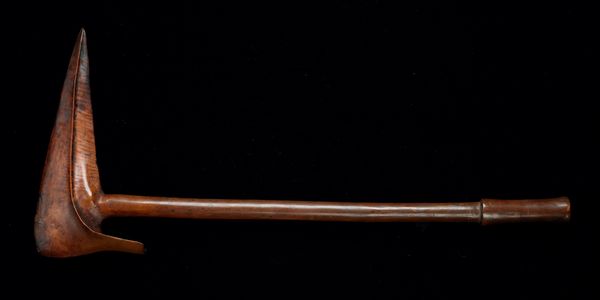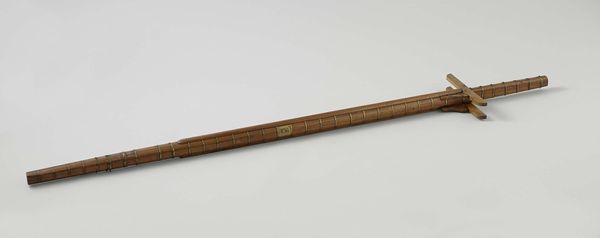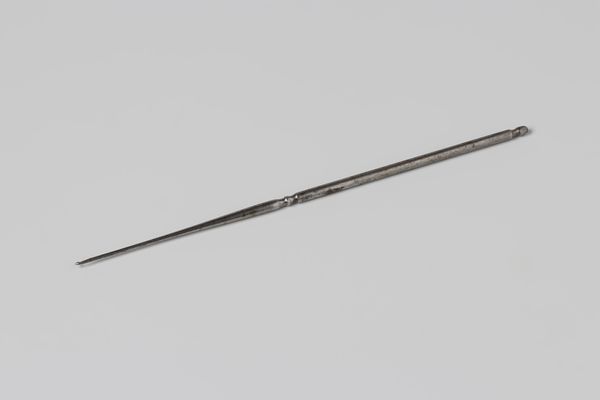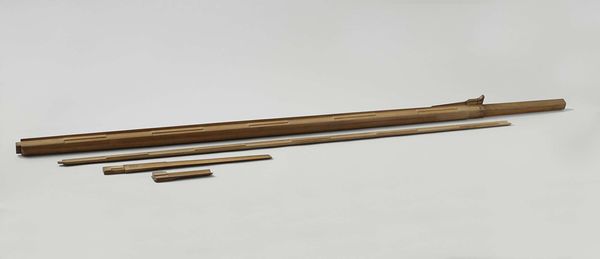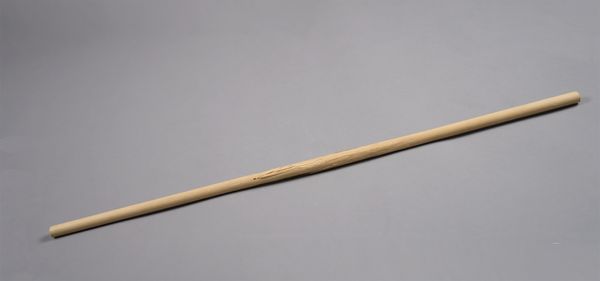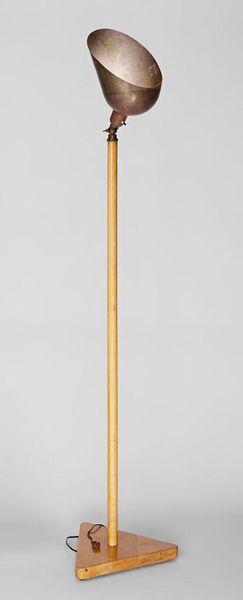
drawing, wood
#
drawing
#
asian-art
#
japan
#
form
#
line
#
wood
#
realism
Dimensions: 13/16 × 2 3/8 × 33 in. (2.06 × 6.03 × 83.82 cm)
Copyright: No Known Copyright
Editor: This "Bamboo Hanging Rod" was created in the early 20th century by Wada Waichisai II. I find the craftsmanship quite beautiful in its simplicity; how can something so utilitarian also feel so refined? What statements might this piece be making about functional art in Japanese culture? Curator: That's a fantastic question! Think about the historical context. The early 20th century was a period of intense modernization and Westernization in Japan. The creation of a refined, handcrafted object like this could be interpreted as a conscious effort to preserve traditional crafts and values in the face of those changes. Editor: So, it's like a quiet act of resistance through art? Curator: Exactly! Consider how bamboo, the primary material, is deeply embedded in Japanese culture, representing resilience, flexibility, and strength. Even its form evokes traditional calligraphy tools. This hanging rod embodies cultural memory. Who did it serve, what were the contexts where it might have hung, and whose art did it showcase? Editor: That makes me wonder, were functional objects often imbued with symbolic meaning in this period? Was it a common way to maintain cultural identity? Curator: Absolutely. Everyday objects frequently became vehicles for cultural expression and subtle resistance. This challenges the western idea that 'high art' exists distinctly and separately from utilitarian design. Also, we could ask to what degree, by whom, and for whom cultural preservation is important. Is that clear in this piece? Editor: Yes, I see it now. It's not just a hanging rod; it’s a statement about cultural preservation and identity. I hadn't considered that everyday objects could carry such weight. Curator: And the act of elevating the everyday has profound implications even today as global traditions and identity blend and blur. Editor: It definitely gives me a lot to think about. Thanks for sharing that perspective.
Comments
No comments
Be the first to comment and join the conversation on the ultimate creative platform.
